Meet our many Khamseen contributors! They include professors, curators, librarians, lecturers, postdoctoral fellows, and advanced PhD students who specialize in Islamic studies, art history, and allied fields in the arts and humanities. Like Team Khamseen, they share a deep commitment to the academic study and public promotion of Islamic art as well as the creation of completely free and open scholarly resources about Islam’s expressive cultures across the globe. Khamseen embodies their voices, expertise, and generosity.
A B C D E F G H I J K L M N O P Q R S T U V W X Y Z
#A
Esra Akın-Kıvanç is Associate Professor of Islamic Art and Architecture at the University of South Florida’s School of Art and Art History. Her current research focuses on cross-cultural exchanges between Byzantium and Islam as manifested in bilingual inscriptions in Greek and Arabic featured on liturgical objects and architectural surfaces. Akın-Kıvanç has co-authored, with Howard Crane, Sinan’s Autobiographies: Five Sixteenth-Century Texts (Brill: Leiden, 2006), and she is author of Mustafa Âli’s Epic Deeds of Artists: A Critical Edition of the Earliest Ottoman Text about the Calligraphers and Painters of the Islamic World (Brill: Leiden, 2011) and Muthanna / Mirror Writing in Islamic Art: History, Theory, and Aesthetics (Bloomington: Indiana University Press, 2020).
See Esra Akın-Kıvanç’s video:
Muthanna

Angela Andersen researches and teaches the architectures of minority Muslim communities, and inter- and intra-religious interactions through architecture. She runs an educational program for children about architecture around the world, and has worked with museums, not-for-profit organizations, and initiatives involving architecture and social issues. She was awarded a postdoctoral fellowship with AKPIA@MIT focused on her work with Alevi communities in Turkey, and has published on Alevi architecture in a number of books and journals. She is the guest editor of the International Journal of Islamic Architecture 11/2 (2022) on the theme of hinterland forces and marginalization in Islamic architecture.
See Angela Andersen’s video:
Cemevi
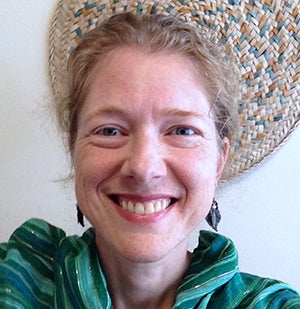
Glaire Anderson is Senior Lecturer in Islamic Art at the University of Edinburgh, and Founding Director of the Digital Lab for Islamic Visual Culture & Collections (DLIVCC). She is an award-winning author of two monographs: A Bridge to the Sky: Art and Science in the Age of Ibn Firnas (Oxford University Press, 2024), and The Islamic Villa in Early Medieval Iberia: Aristocratic Estates and Court Culture in Umayyad Cordoba (Ashgate, 2013). Besides numerous articles on the architecture, art, and history of medieval Islamic Iberia and North Africa, she also co-edited The Aghlabids and Their Neighbors (Brill, 2018) and Revisiting al-Andalus: Perspectives on the Material Culture of Islamic Iberia and Beyond (Brill, 2007).
See Glaire Anderson’s videos:
Mihrab at the Great Mosque of Córdoba
Munya

Michelle Apotsos is an Associate Professor of Art History at Williams College, specializing in Afro-Islamic architecture and creative production. She received her PhD from Stanford University in 2013 and has taught courses on sustainable architecture, Islamic art in Africa, “World” Architecture, and African art in Western museum spaces. She has also published in various journals, including African Arts, the International Journal of Islamic Architecture, Ghana Journal, and Material Culture Review. She is the author of Architecture, Islam, and Identity in West Africa: Lessons from Larabanga (Routledge, 2016) and The Masjid in Contemporary Islamic Africa (Cambridge University Press, 2021), and her current projects focus on environmentalism in the built landscape, alternative masjid / mosque spaces in contemporary Africa, and the rise of Ottoman-style mosques in contemporary sub-Saharan Africa.
See Michelle Apotsos’s video:
Toron

Hala Auji is Associate Professor of Art History and the Hamad bin Khalifa Endowed Chair for Islamic Art at Virginia Commonwealth University in Richmond; she also co-chairs the Biennial Hamad bin Khalifa Symposium on Islamic Art. Her research explores transcultural modernity, print culture, and photography in eastern Mediterranean communities during the long nineteenth century. With a background in graphic design, criticism, and art history, she examines intersections between art, design history, and comparative literature, focusing on Islamic and Middle Eastern art. She is the author of Printing Arab Modernity: Book Culture and the American Press in Nineteenth-Century Beirut (Brill, 2016) and co-editor of The Arab Nahda as Popular Entertainment: Mass Culture and Modernity in the Middle East (Bloomsbury, 2023). Her current book project investigates printed portraiture in Ottoman provincial cities.
See Hala Auji’s videos:
Manufactured Images: The Engravings of 19th-Century Arabic Periodicals
Qibla

#B
Carol Bier is a historian of Islamic art, who has published widely on cultural aspects of geometry in Islamic art that inform beauty of form, pattern and structure. A Research Scholar with the Center for Islamic Studies at the Graduate Theological Union in Berkeley, CA, since 2010, she is concurrently Research Associate at The Textile Museum in Washington, DC (2001–present), where she served as Curator for Eastern Hemisphere Collections (1984–2001). She was President of the Textile Society of America (2006–08).
See Carol Bier’s videos:
Ikat (Coming Soon)
Suzani
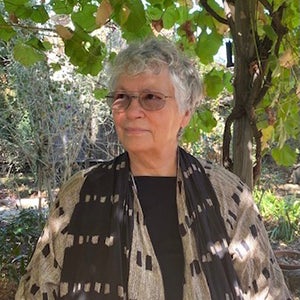
Evrim Binbaş received his PhD degree from the University of Chicago. After seven years at Royal Holloway, University of London, he moved to the Institute of Oriental and Asian Studies at the University of Bonn. He studies early modern Islamic history with a particular focus on the Timurid and Turkmen dynasties in the fifteenth century. His prize-winning first book, Intellectual Networks in Timurid Iran: Sharaf al-Dīn ‘Alī Yazdī and the Islamicate Republic of Letters, was published by Cambridge University Press in 2016. Currently Binbaş is working on three different publication projects: a critical edition of Yazdi’s Zayl-i Zafarnama, a handbook on the Timurid dynasty, and a monograph on the modalities of sovereignty. He also is managing a DFG-funded research project on genealogical trees written in Turkish, Persian, and Arabic between 1500 and 1922 CE.
See Evrim Binbaş’s video:
Shajara

Patricia Blessing is Associate Professor of Art and Art History at Stanford University. Blessing is the author of Rebuilding Anatolia after the Mongol Conquest: Islamic Architecture in the Lands of Rūm, 1240–1330 (Ashgate, 2014) and Architecture and Material Politics in the Fifteenth-century Ottoman Empire (Cambridge University Press, 2022). With Elizabeth Dospel Williams and Eiren Shea, she co-authored Medieval Textiles across Eurasia, c. 300-1400 for the Cambridge Elements series Global Middle Ages (Cambridge University Press, 2023). Blessing’s work has been supported by the ANAMED Research Center for Anatolian Cultures, the Barakat Trust, the British Academy, the Gerda Henkel Foundation, the International Center of Medieval Art, the Samuel H. Kress Foundation, and the Society of Architectural Historians.
See Patricia Blessing’s videos:
Water and Sound in Islamic Architecture
Squinch and Pendentive

Alexander Brey is Assistant Professor in the Department of Art at Wellesley College. He received his PhD and MA in the History of Art at Bryn Mawr College. His research interests include the visual cultures in the Umayyad caliphate and the medieval Mediterranean more generally, ranging from studies of the built environment to the trade and reuse of luxury goods. He is currently working on his book project, provisionally titled “The Caliph’s Prey: Hunting in the Visual Cultures of the Umayyad Empire,” and participating in the Getty Advanced Workshop on Network Analysis and Digital Art History. His work has been supported by fellowships from the Social Science Research Council and the American Center for Oriental Research in Amman, Jordan.
See Alexander Brey’s video:
The Baths of al-Walid at Qusayr Amra

Sam Bowker is the Associate Professor in Art History and Visual Culture at Charles Sturt University. He and Seif El Rashidi published The Tentmakers of Cairo: Egypt’s Medieval and Modern Applique Craft in 2018 for the American University in Cairo Press. His ongoing research considers issues raised by Islamic art and design when seen from regional Australian perspectives, and he teaches Islamic art and design with a post-19th century focus.
See Sam Bowker’s video:
The Egyptian Tentmakers and the Art of Khayamiya

#C
Mounia Chekhab-Abudaya, a specialist of manuscripts and pilgrimage-related devotional materials in the Islamic world, is Deputy Director of Curatorial Affairs at the Museum of Islamic Art (MIA) in Doha, Qatar. She completed her Ph.D. in Islamic Art History and Archaeology at the Pantheon Sorbonne University in Paris in 2012 and taught Islamic art for four years at the Pantheon Sorbonne and INALCO. At the MIA, she led the curatorial team during the reinstallation of the museum’s permanent galleries (2015-2022) and has curated or co-curated eleven temporary exhibitions, including Hajj – The Journey through Art (2013) in collaboration with the British Museum, Building Our Collection: Ceramics of Al-Andalus (2014), Qajar Women (2015), Imperial Threads: Motifs and Artisans from Turkey, Iran and India (2017), Baghdad: Eye’s Delight (2022), and Splendours of the Atlas (2024).
See Mounia Chekhab-Abudaya’s video:
Zawiya

Lola Cindrić completed two Master’s degrees in Heritage Conservation and Social Anthropology, after which she trained in the craft of stone inlay (also known as pietra dura) in Florence, Italy. She is now a PhD candidate in Social Anthropology at the School for Advanced Studies in Social Sciences (EHESS) in Paris and is affiliated with the Center for South Asian & Himalayan Studies (CESAH), also in Paris. Her dissertation focuses on past and present stone-inlaying connections between Italy and India, especially Florence and Agra, in order to explore the circulations of artifacts, their imbrications in power dynamics, and the construction of local and global hierarchies through artisanal knowledge and objects.
See Lola Cindrić’s video:
The British Appropriation of Mughal Pacchikari (Stone Inlay) in Agra, ca. 1840-1940 (Coming Soon)

Sascha Crasnow (she/her) is the pedagogy coordinator for Khamseen and an Assistant Professor of Art History at Drake University. Her research focuses on contemporary art from the SWANA region, with a particular interest in how artists respond to their socio-political conditions, race, gender & sexuality. Her writing has appeared in publications such as the Journal of Visual Culture and Lateral. Her book project, The Age of Disillusionment: Palestinian Art After the Intifadas, is under review with Duke University Press.
See Sascha Crasnow’s videos:
Saba Taj’s Interstellar Uber // Negotiations with God: Queer Articulations in Contemporary Islamic Art
Al-Buraq
Decolonization (coming soon)

Filiz Çakır Phillip holds a Dr. Phil. from the Institute of Art History at Freie Universität Berlin and is an independent curator and scholar of Islamic Art History. She worked as curator at the Aga Khan Museum in Toronto (2013-2022) and at the Museum for Islamic Art in Berlin (2006-2012). She has curated numerous exhibitions, most recently: Lustre and Luxe from Islamic Spain: Liquid Frontiers and Entangled Worlds (2023) and Hidden Stories: Books Along the Silk Roads (2021–2023) with Prof. Suzanne Conklin Akbari. She has authored several books, including Syrian Living: Medieval to Modern (2022) with Dr. Anke Scharrahs. Çakır Phillip also serves as a member of the Professional Development Committee of the Renaissance Society of America and as a board member of the Association of Art Museum Curators & AAMC Foundation in New York.
See Filiz Çakır Phillip’s videos:
Mighfar
Tamgha
The History of the Blazon in the Mamluk Period

#D
Eleanor Lucy Deacon is a Postdoctoral Researcher at the University of Fribourg (Switzerland). She is a specialist of Persian devotional drama. Her work with handwritten historical scripts pertaining to the Iranian Shiʿi passion play (taʿziyeh-khānī) led her into manuscript research, and an interest in the routes through which Persian and Arabic manuscripts entered the collections held in European libraries. Before moving to Fribourg to join the comparative project “Women, Martyrdom, & Religious Drama in the Abrahamic Traditions,” she was World Cultures Curator (Arabic and Persian) at the University of Edinburgh’s Heritage Collections, where she was instrumental in renaming the old “Oriental Manuscript Collection” as “Manuscripts of the Islamicate World and South Asia” (MIWSA) and creating the MIWSA collection’s online catalogue.
See Elanor Lucy Deacon’s video:
Jamiʿ al-Tawarikh: Provenance

Layla S. Diba is an independent art advisor, scholar, and curator specializing in the art of 19th-and 20th-century Iran. She was the founding Director and Chief Curator of the Negarestan Museum in Tehran from 1975-78 and The Brooklyn Museum of Art’s Curator of Islamic Art from 1990-2000, where she organized the exhibition Royal Persian Paintings: The Qajar Epoch (1785-1925). She is the author of numerous publications and essays on Persian and Islamic art, including Turkmen Silver (2011), as well as editor and co-editor of Royal Persian Paintings: The Qajar Epoch (1785-1925) (1998) and Iran Modern (2013).
See Layla S. Diba’s video:
From the Miniature to the Monumental: The Negarestan Museum Painting of the Sons of Fath Ali Shah

Ashley Dimmig is the Crossman Gallery Director at the University of Wisconsin-Whitewater. There she oversees both the Crossman Gallery and the Community Engagement Center Gallery, and also teaches art history in the Department of Art and Design. After completing her PhD in the History of Art at the University of Michigan (2019), she held the position of Wieler-Mellon Postdoctoral Curatorial Fellow in Islamic Art at the Walters Art Museum in Baltimore where she curated the newly reinstalled permanent galleries of Islamic art within “Across Asia: Arts of Asia and the Islamic World” (opened April 2023). Her recent publications include chapters in the edited volumes Deconstructing Myths of Islamic Art (Routledge, 2022) and Textile in Architecture: From the Middle Ages to Modernism (Routledge, 2023). Dimmig’s research has been supported by various awards and fellowships including the Ittleson Fellowship at the Center for Advanced Studies in the Visual Arts (CASVA) and the Ekrem Hakkı Ayverdi Fellowship in Ottoman Architectural Culture and History at the Research Center for Anatolian Civilizations (ANAMED) in Istanbul. She also holds two Master of Art degrees from Indiana University Bloomington and Koç University in Istanbul, as well as a Bachelor of Fine Arts degree from the Kansas City Art Institute.
See Ashley Dimmig’s video:
Islamic Art at the Walters Art Museum
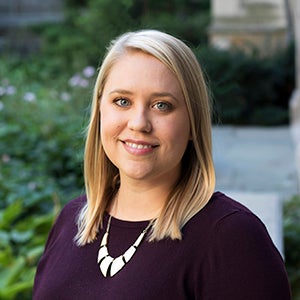
#E
Asa Eger (Ph.D., University of Chicago, 2008) is Professor of the Islamic World in the History Department at the University of North Carolina – Greensboro. He researches and teaches the Early and Medieval Mediterranean and Islamic Near East, focusing on the intersection of archaeology and history. Specifically, he studies frontiers, landscape archaeology, and environmental history in Anatolia and the Levant. He also works on gender and queer archaeology related to bathhouses in modern Istanbul and the Roman world. His recent books include Antioch: A History (2021), co-authored with Andrea U. de Giorgi, and The Islamic-Byzantine Frontier (2015), both recipients of the G. Ernest Wright book award from ASOR.
See Asa Eger’s video:
Hammam
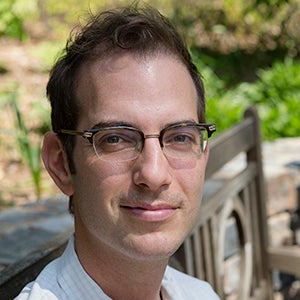
Maryam Ekhtiar is Patti Cadby Birch Curator in the Department of Islamic Art at the Metropolitan Museum of Art. She is a specialist in nineteenth-century Persian art and culture, calligraphy, and later Persian painting. She co-edited the exhibition catalogue Royal Persian Paintings: The Qajar Epoch 1785-1925 (1998), Masterpieces from the Department of Islamic Art in the Metropolitan Museum of Art (2011), and Art of the Islamic World: A Resource for Educators (2012). Her latest book, How to Read the Art of Islamic Calligraphy, was published in 2018, and her article “Ahl al-Bayt Imagery Revisited: A Drawing by Isma‘il Jalayir at the Metropolitan Museum of Art,” is included in the volume Revealing the Unseen: New Perspectives on Qajar Art (2021).
See Maryam Ekhtiar’s video:
A Calligraphic Composition by Ismaʿil Jalayir in the Collection of the Metropolitan Museum of Art

Farshid Emami Farshid Emami (Ph.D., Harvard University, 2017) is Assistant Professor in the Department of Art History at Rice University. He specializes in the history of Islamic architecture, urbanism, and the arts, with a focus on the early modern period and Safavid Iran. He is the author of Isfahan: Architecture and Urban Experience in Early Modern Iran (Penn State University Press, 2024). His scholarly interests include transregional histories of early modernity, social experiences of architecture and urban spaces, and the intersections of architecture and literature. In addition to his publications on Safavid art and architecture, he has written on topics such as lithography in nineteenth-century Iran and modernist architecture and urbanism in the Middle East.
See Farshid Emami’s video:
Coffee and Coffeehouses in Ottoman and Safavid Lands, 1500-1800
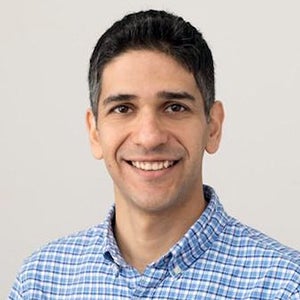
Aslıhan Erkmen (Ph.D., Istanbul Technical University) is Associate Professor of Art History at Istanbul Technical University, where she also serves as Art History Program Coordinator. Her main research interests include Islamic book arts, illustrated manuscripts, traditional arts and crafts, and intangible cultural heritage. With Şebnem Tamcan Parladır, she recently co-edited Zeren Tanındı Festschrift: Art and Culture of Books in the Islamic World (2022). Her scholarly output includes publications in both English and Turkish languages, as well as participation in EU-funded projects. Moreover, as a board member of Turkey’s Traditional Arts Association (TAA), she also practices the traditional arts of marbled paper and paper filigree.
See Aslıhan Erkmen’s video:
Hilye

#F
Emine Fetvacı is Norma Jean Calderwood University Professor in Islamic and Asian Art at Boston College. She is the author of Picturing History at the Ottoman Court (Indiana University Press, 2013), and The Album of the World Emperor: Cross-Cultural Collecting and the Art of Album-Making In Seventeenth Century Istanbul (Princeton University Press, 2019), and the editor, with Erdem Çipa, of Writing History at the Ottoman Court (IUP, 2013). Among other venues, her articles have appeared in the Art Bulletin, Ars Orientalis, and Muqarnas. She has held a Stanford University Mellon Postdoctoral Fellowship as well as been a member at the Institute for Advanced Study, Princeton.
See Emine Fetvacı’s video:
Ottoman Illustrated Histories
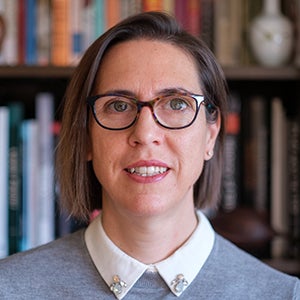
Esther Voswinckel Filiz (Ph.D., Ruhr-Universität Bochum, 2020) is a researcher at the Orient-Institut in Istanbul. She studied Cultural Anthropology and Religious Studies in Bologna and Tübingen, with a focus on the anthropology of religion in the Mediterranean. She conducted field research in Üsküdar for several years for her doctoral thesis entitled “Aziz Mahmud Hüdayi in Istanbul: Biography of a Place,” published as a German-language book in 2022. Her research focuses on the material culture of Sufism in Istanbul, on the historical and contemporary aesthetics of saints’ tombs (türbe), and on the portable and textile paraphernalia therein. Her forthcoming publications include, among others, “Headgear” (with Semih Ceyhan) in Brill’s Handbook of Sufi Material Culture, and “Sufi Turbans in Istanbul: The Textile and Textual Production of the Tâc-ı Șerîf,” in The Politics of Dress and Identity in Eastern Mediterranean Societies, Past and Present.
See Esther Voswinckel Filiz’s video:
Turban

#G
Yasemin Gencer is a Pre-Faculty Fellow in the Department of Art, Art History, and Design at Wayne State University. She is a scholar of Islamic art and civilization specializing in the history of Ottoman and modern Turkish art and print culture. She has authored a number of articles on printing and the early Turkish Republican popular press, and she regularly writes a research and translation blog entitled Today in 1920s Turkey. Gencer is currently preparing for publication her English translation of Celal Nuri’s Hatem ül-Enbiya (Seal of the Prophets), an Ottoman Turkish scholarly monograph on the Prophet Muhammad written in 1914 CE.
See Yasemin Gencer’s videos:
İbrahim Müteferrika and the First Printed Books of the Islamic World
Mihrab

Melanie Gibson is Editor of the Art Series at GINGKO. Her research focuses on ceramics of the Islamic world. Her 2010 PhD dissertation, “Takūk and Timthāl: A Study of Glazed Ceramic Sculpture from Iran and Syria c. 1150-1250,” explored ceramic figural sculpture. She has written articles and book chapters on sculpture in plaster and metalwork, including “‘Healing for What is in the Breasts’: Ceramic Breastfeeding Figures from the Medieval Islamic World,” in Fruit of Knowledge, Wheel of Learning: Studies in Honour of Professor Robert Hillenbrand (London: GINGKO, 2022).
See Melanie Gibson’s video:
Ceramic Breastfeeding Figures from Iran and Syria

Sabiha Göloğlu is a postdoctoral university assistant at the University of Vienna’s Department of Art History. Between 2021 and 2024, she held a Marie Sklodowska-Curie Individual Global Fellowship at the University of Hamburg and the University of Michigan. Among others, her publications include an article in Muqarnas about a late Ottoman canvas painting of Mecca and Medina and exchanges between photography, painting, and print media; she has written about the talismanic use of hand-executed and printed images of Mecca, Medina, and Jerusalem in prayer manuscripts; and she co-edited a special double issue of the Journal of Islamic Manuscripts on Sulayman al-Jazuli’s (d. 870/1465) Dalāʾil al-Khayrāt (Proofs of Good Deeds). Dr. Göloğlu is currently finalizing her monograph entitled The House of God and the Tomb of the Prophet: Images of Mecca and Medina in the Ottoman Empire (16th–19th Century).
See Sabiha Göloğlu’s video:
Touching Mecca and Medina: The Dalā’il al-Khayrāt and Devotional Practices

Christiane Gruber is Professor of Islamic Art in the History of Art Department at the University of Michigan, Ann Arbor and Founding Director of Khamseen: Islamic Art History Online. Her fields of interest include Islamic ascension texts and images, depictions of the Prophet Muhammad, books arts, codicology, and paleography, architecture, and visual and material culture from the medieval period to today. Her most recent publications include her third monograph The Praiseworthy One: The Prophet Muhammad in Islamic Texts and Images and her edited volume The Image Debate: Figural Representation in Islam and Across the World, both published in 2019.
See Christiane Gruber’s videos:
A Safavid Painting of the Prophet Muhammad’s Miʿraj
“Do-For-Self”: The Visual Culture of the Nation of Islam
George Floyd in Iran, Syria, and Afghanistan: Visual Commentaries in Islamic Lands
Two Islamic Amulets in the Aga Khan Museum
Masjid
Jamiʿ al-Tawarikh: Images of the Prophet
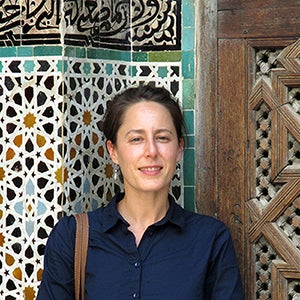
Vivek Gupta researches connected book histories across South, Central, and West Asia (ca. 1200-present). Currently, he is a British Academy Postdoctoral Fellow at University College London. From 2020 to 2023, he served as a Postdoctoral Associate at the University of Cambridge, where he continues to co-direct (with Suzanne Reynolds) a research and exhibition project at the Fitzwilliam Museum on Hindustani Airs: Music, Pleasure, and Cultural Exchange in Courtly Lucknow.Since 2020, he also has collaborated with several organizations in India to produce the webinar, From Konkan to Coromandel: Cultures and Societies of the Deccan World. His first book, Worldshaping Wonders: Books and Visual Knowledge in Hindustan, is currently under contract.
See Vivek Gupta’s video:
ʿAjab

#H
Negar Habibi is an art historian, lecturer in Islamic and Iranian Art History and Soudavar Foundation fellow at the University of Geneva, Switzerland. Her research focuses principally on paintings from early modern Iran. Adopting a multidisciplinary approach, her academic work centers on the artists’ career and life, the authenticity of their signature, gender issues and artistic patronage. She has published several articles on the art and artists of late seventeenth-century in Iran, and her book titled ʿAli Qoli Jebādār et l’occidentalisme safavide: une étude sur les peintures dites farangi sāzi, leurs milieux et commanditaires sous Shah Soleimān(1666-94) was published by Brill in 2018.
See Negar Habibi’s videos:
The Depiction of European Women in Late Safavid Paintings
Farangi

Sylvia Houghteling is Associate Professor in the Department of History of Art at Bryn Mawr College in Pennsylvania, USA. She specializes in early modern visual and material culture with a focus on the history of textiles, South Asian art and architecture, and the material legacies and ruptures of European colonialism. Houghteling’s research has been supported by the National Endowment for the Humanities, the Yale University Art Gallery, and the Metropolitan Museum of Art. She is the author of The Art of Cloth in Mughal India (Princeton University Press, 2022), which received the College Art Association’s 2023 Charles Rufus Morey Book Award, the Textile Society of America’s 2024 R.L. Shep Book Award, and the 2024 Bernard S. Cohn Book Prize from the Association for Asian Studies. Houghteling’s ongoing research looks at textiles and temporality and the unique material histories of the eastern Indian Ocean trade.
See Sylvia Houghteling’s video:
Chintz (Coming Soon)

Kerr Houston is a professor of art history, theory and criticism at the Maryland Institute College of Art, where he has taught since 2002. His scholarship focuses primarily on Italian Renaissance visual culture and contemporary art and art criticism, but he also teaches courses on Islamic art and architecture and the history of aesthetics. He is the author of two books—An Introduction to Art Criticism and The Place of the Viewer: The Embodied Beholder in the History of Art, 1764-1968—and numerous articles. He also served as the editor of Art Inquiries from 2017 to 2020.
See Kerr Houston’s video:
Arabesque
Marjane Satrapi’s Persepolis

#K
Ruba Kana‘an teaches Islamic art and architecture at the University of Toronto. Her research and publications focus on the intersections between art, artists, art production, and law in Muslim contexts. She is author of multiple articles on inlaid metalwork portable objects dating to the twelfth and thirteenth centuries, and the forthcoming book The Friday Mosque: Law, Architecture, and Authority in Pre-Modern Muslim Societies (Edinburgh University Press). Her experience spans the worlds of academia, museums, architectural practice, and community-based art education.
See Ruba Kana‘an’s video:
The Bobrinski Bucket

Namrata B. Kanchan is the International Humanities Postdoctoral Fellow at Cogut Institute and the Department of Comparative Literature at Brown University. She received her Ph.D. from the University of Texas at Austin in Fall 2023. Her dissertation examines the genesis of early modern Dakani literature in western India’s Deccan sultanate courts through the study of the region’s manuscripts and material culture. Her fields of interest include Indian vernacular and Persian literature, early modern manuscript culture, book arts, codicology, paleography, and visual and material culture from the fifteenth century to the present. In 2023, she won the Historians of Islamic Art Association’s (HIAA) Margaret B. Ševčenko Prize for her paper on calligraphic choices in early modern Dakani manuscripts.
See Namrata B. Kanchan’s (Graduate Student Presentation Award 2023 Recipient) video:
A Legacy of Female Power: Representations of Queen Humayun Shah from the Deccan’s Ahmadnagar Sultanate

Marion Katz is a Professor of Middle Eastern and Islamic Studies at New York University. Her research focuses on pre-modern Islamic law, gender, and ritual between the eleventh and fifteenth centuries, especially the conceptual structures of legal works and how Islamic legal thought relates to other normative discourses that were authoritative for premodern Muslims. Her books includes Body of Text: The Emergence of the Sunni Law of Ritual Purity (2002), The Birth of The Prophet Muhammad: Devotional Piety in Sunni Islam (2007), Women in the Mosque: A History of Legal Thought and Social Practice (2014), and Wives and Work: Islamic Law and Ethics Before Modernity (2022).
See Marion Katz’s video:
Mawlid
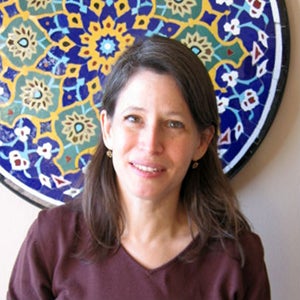
Sumru Belger Krody joined The Textile Museum in 1994, after receiving her undergraduate and graduate degrees in classical archaeology from Istanbul University and the University of Pennsylvania, Philadelphia. Her research area is textiles from the late antique through the early modern period in the Islamic lands, with special focus on the influence of textile techniques and structures on iconography, as well as the social and economic power of textiles. She also serves as editor-in-chief of The Textile Museum Journal. She is the author of several books and many articles on textiles arts.
See Sumru Belger Krody’s video:
Prayer Carpets
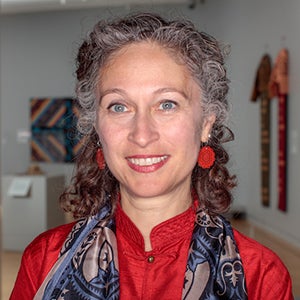
Evyn Kropf is a librarian and curator of Islamic manuscripts at the University of Michigan Library. As a specialist of Islamic codicology and Arabic manuscript culture, her particular interests include writing material (especially paper), structural repairs, reading and collecting practices of the Ottoman era as well as the significance of pictograms and other visual content for Sufi knowledge transmission. Her recent publications include, among others, “Recalling Alikurna: “ليكوريا” Countermarked Paper among Scribes in the Late 19th Century Ottoman Levant,” In The Trade in Papers Marked with Non-Latin Characters (Brill, 2018) and “‘Sensible Metaphors’: Pictograms in the Transmission of ʿAbd al-Wahhāb al-Shaʽrānī’s (d.973/1565) al-Mīzān al-kubrá,” In Visualizing Sufism (Brill, 2023).
See Evyn Kropf’s video:
Colophon
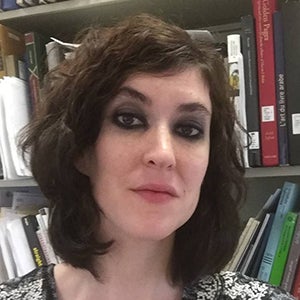
Linda Komaroff (PhD, Institute of Fine Arts, NYU, 1984) is Curator of Islamic Art and Department Head, Art of the Middle East, at LACMA. She has organized various exhibitions on Islamic art as well as contemporary Middle East art, among them The Legacy of Genghis Khan: Courtly Art and Culture in Western Asia, 1256–1353 (2002-03), Gifts of the Sultan: The Arts of Giving at the Islamic Courts (2011-12), In the Fields of Empty Days: The Intersection of Past and Present in Iranian Art (2018); she is currently working on Women Defining Women in Contemporary Art of the Middle East and Beyond (2023) and Dining with the Sultan: The Fine Art of Feasting (2024). She is the author or editor of several books and exhibition catalogues, and has written numerous articles and book chapters on Islamic and contemporary Middle East art.
See Linda Komaroff’s video:
On a Tinned Copper Bowl and Designs on Paper

#L
Ilkka Lindstedt (Ph.D., University of Helsinki, 2014) is Lecturer in Islamic theology at the University of Helsinki, Finland. He has published scholarly articles on pre-Islamic Arabia, early Islam, Arabic epigraphy, and Arabic historiography. He is particularly interested in changes in religious groups and ideas in late antique Arabia. His monograph Muhammad and His Followers in Context: The Religious Map of Late Antique Arabia was published by Brill in 2024.
See Ilkka Lindstedt’s video:
Graffiti

#M
Richard McClary (Ph.D., University of Edinburgh, 2015) is a lecturer in Islamic Art and Architecture at the University of York. His first monograph, entitled Rum Seljuq Architecture 1170-1220: The Patronage of Sultans was published by Edinburgh University Press in 2017, and his second, Medieval Monuments of Central Asia. Qarakhanid Architecture of the 11th and 12th Centuries, also with EUP, appeared in press in 2020. He has co-edited a volume with Andrew Peacock, entitled Turkish History and Culture in India, Identity, Art and Transregional Connections (Brill, 2020), as well as numerous articles and book chapters on the topic of medieval Islamic architecture and ceramics. He is also a trustee and the Research Director for the British Institute of Persian Studies.

Richard McGregor is Professor and Chair of Religious Studies at Vanderbilt University in Nashville, TN. His primary field of research is medieval Egypt and Syria, with a focus on religious thought, ritual, and Sufism. His most recent book, Islam and the Devotional Object: Seeing Religion in Egypt and Syria (2020), explores the lives of a series of religious objects. He also works on the devotional gaze, the production and circulation of relics, and the biography of the Prophet Muhammad. He recently contributed the entry “Islamic Relics” to the Oxford Research Encyclopedia of Religion.
See Richard McGregor’s videos:
Hajj Materials and Rites from Egypt
Kiswa
Mahmal

Leslee Katrina Michelsen (Ph.D., University of Pennsylvania) is the Director of the National Museum of American Diplomacy at the US Department of State. From 2017-2023 she served as the Senior Curator of Collections and Exhibitions at the Shangri La Museum of Islamic Art, Culture & Design in Honolulu. She also was Head of the Curatorial and Research Section at the Museum of Islamic Art in Doha, Qatar, from 2011-2016, and has worked on numerous cultural heritage and archaeology projects throughout Central Asia, South Asia, and East Africa. She is a specialist of materiality and making in mediums ranging from architecture to ceramics and textiles, as well as in contemporary museology and cultural heritage. She co-founded the first MA program in Museum Studies in Uzbekistan, which was dedicated to diversifying the global field of curatorial, interpretation, and collections specialists. She is on the Board of Directors of ICOM-US, where she is also the Co-Chair of the Programs Committee, and she also serves as a peer reviewer for the American Alliance of Museums.

Nancy Micklewright writes primarily about the history of photography and fashion history in the Ottoman Empire with a focus on gender. Her edited volume, Mohamed Zakariya, a 21st century Master Calligrapher, was published in 2022 by Fons Vitae. Most recently she has received research fellowships from the Metropolitan Museum of Art and the National Gallery of Art. Through 2019, she was Head of Public and Scholarly Engagement at the Smithsonian’s National Museum of Asian Art, where among other duties she served as the editor-in-chief of the journal Ars Orientalis. She has published widely on aspects of photographic practice in the Ottoman Empire, travel albums, local engagement with photography, and related issues. Her new book, Fashion in a Global City: Dress and Photography in late Ottoman Istanbul, will appear in 2025.
See Nancy Micklewright’s video:
Mohamed Zakariya and the Practice of Calligraphy

Ashley Miller is Assistant Curator of African Art at the University of Michigan Museum of Art (UMMA). She specializes in the material and visual cultures of 19th– and 20th-century northwest Africa, with a broader interest in issues of heritage and collective memory, the history of museums in Africa, Muslim expressive cultures of Africa, and the politics and representation of identity in colonial and postcolonial societies. Currently, she is at work on a major exhibition entitled Ghana 1957, which explores Ghana’s position as a locus for transregional, pan-African artistic exchange in the decades following African independence from colonial rule.
See Ashley Miller’s video:
Djingareyber Mosque of Timbuktu: Expression and Innovation at the Saharan Crossroads

Heba Mostafa is Associate Professor of Islamic art and architecture in the Department of Art History at the University of Toronto, St George Campus, as well as Senior Fellow at Massey College. She received her doctorate from Cambridge University’s Department of Architecture in 2012. Her research focuses on the formation of Islamic architecture as well as Islam’s interface with late antiquity, Christianity, and Judaism through commemorative architecture, pilgrimage, and ritual practice, with a particular focus on Jerusalem and Cairo. Her current project explores nature veneration practices in medieval Cairo, with a focus on the Nilometer at al-Rawda Island, bringing into conversation the mediatory role of nature in reconciling the religious, spiritual, and scientific contexts in medieval Islam. She is the author of Architecture of Anxiety: Body Politics and the Formation of Islamic Architecture (Brill, 2024).
See Heba Mostafa’s videos:
The Dome of the Rock: Original Mosaics
Qubba

Atefeh Seyed Mousavi received her Ph.D. from the University of Göttingen, Germany, in 2018. She previously worked as a lecturer of Islamic art history and architecture at Georg August University of Göttingen. Her research focuses principally on the visual and material culture of Iran from the early modern period to today. During extensive fieldwork in Shiraz, Dr. Mousavi wrote a catalog of the art of narrative tile painting. She also has published several articles on popular Iranian artworks and artists from the late 18th to the early 20th century, and her 2018 book, which was supported by a Barakat Trust grant, is entitled Narrative Illustration on Qajar Tilework in Shiraz.
See Atefeh Seyed Mousavi’s video:
Haft Rang

Stephennie Mulder is Associate Professor of Islamic Art and Architecture at the University of Texas at Austin. She is a specialist in Islamic art, architectural history, and archaeology. Her book The Shrines of the ‘Alids in Medieval Syria: Sunnis, Shi’s and the Architecture of Coexistence (Edinburgh University Press, 2014) received UT Austin’s Hamilton Award Grand Prize, the World Prize for Book of the Year from the Islamic Republic of Iran, the Syrian Studies Association book prize, and was listed as an ALA Choice magazine outstanding academic title. Other publications include an edited volume, Imagining Antiquity in Islamic Societies (Intellect, 2022), as well as academic articles on medieval and contemporary art and architectural history, Islamic archaeology, and cultural heritage, including in the Journal of Islamic Archaeology, the International Journal of Islamic Architecture, and The Oxford Handbook of Islamic Archaeology.
See Stephennie Mulder’s video:
Muqarnas

Nazanin Hedayat Munroe is Associate Professor and Director of Textiles in Business & Technology of Fashion at City University of New York. An artist and art historian, she specializes in silks and fashion from the early modern Persianate world. She is author of Sufi Lovers, Safavid Silks and Early Modern Identity (Amsterdam University Press, 2023), which received the Henry Wasser Award for Outstanding Research, as well as Skilled Immigrants in the Textile and Fashion Industries (Bloomsbury, 2024) and A Cultural History of Western Fashion (Bloomsbury, 2022). She has published her research in the Textile Museum Journal, Journal for Textile Design, Research and Practice, and The Metropolitan Museum of Art’s Heilbrunn Timeline of Art History, where she was an educator and textile specialist from 2011 to 2016.
See Nazanin Hedayat Munroe’s video:
Figural Silk in Safavid Iran

Harry Munt is Senior Lecturer in Medieval History at the University of York. His interests include Islamic ideas about pilgrimage and sacred places and the history of the Arabian Peninsula as well as early Islamic history and history-writing more broadly. He is the author of several articles on these topics as well as the monograph The Holy City of Medina: Sacred Space in Early Islamic Arabia (Cambridge: Cambridge, University Press, 2014).
See Harry Munt’s video:
Haram

#N
Mika Natif is Associate Professor of Art History at the George Washington University. Her scholarly work focuses on the intercultural exchanges and global connections that Muslim societies forged with Europe during the premodern era. She is the author of Mughal Occidentalism: Artistic Encounters Between Europe and Asia at the Courts of India, 1580-1630 (Leiden: Brill, 2018). Her current research explores notions of images, diversity and religious tolerance in the arts of Mughal India, female portraiture, and the role of women as patrons and artists in pre-modern Persianate spheres.
See Mika Natif’s videos:
Simurgh
Images of the Virgin Mary in Mughal Art
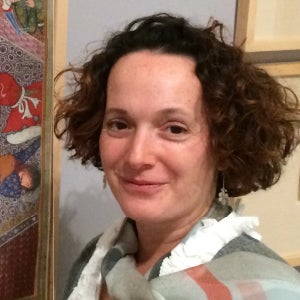
Emily Neumeier is Assistant Professor of Art History at Temple University. Her research concerns the art and architecture of the Eastern Mediterranean, particularly of the Ottoman Empire and the Turkish Republic. She is the co-editor of the volume Hagia Sophia in the Long Nineteenth Century (Edinburgh University Press, 2024) and the author of Architectural Revolution on the Ottoman Frontier: Greece and Albania in the Age of Ali Pasha (Penn State University Press, 2025).
See Emily Neumeier’s video:
The Paintings of Osman Hamdi Bey
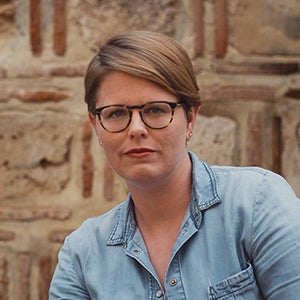
Erin Hyde Nolan (Ph.D., Boston University) is a Visiting Assistant Professor at Bates College and Lecturer at Tufts University. Her research focuses on photographic history and visual culture from the Islamic world, especially the circulation of images and ways that lens-based technology connects continents, countries, and cultures. She is the co-author, with Sophie Junge, of Survey Practices and Landscape Photography Across the Globe (Routledge, 2022), and she also has published essays in Ars Orientalis and Trans Asia Photography. Her scholarship has been supported by the Terra Foundation for American Art, Kunsthistorisches Institut-Florenz, Max-Planck Society, Museum of Fine Arts, Houston, Historians of Islamic Art Association, and Getty Research Institute.
See Erin Hyde Nolan’s video:
Ottoman Costume Portraits: Photographs in the Elbise-i Osmaniyye

#O
Bernard O’Kane is a professor of Islamic Art and Architecture at The American University in Cairo. He has also been a visiting professor at Harvard University and the University of California at Berkeley. He has authored several books including The Mosques of Egypt, The Illustrated Guide to the Museum of Islamic Art in Cairo, Timurid Architecture in Khurasan and Mosques: the 100 Most Iconic Islamic Houses of Worship. O’Kane is also an avid photographer. He recently directed the creation of the The Monumental Inscriptions of Cairo database featuring searchable and translated transcriptions of epigraphy on Cairo’s historic monuments.
See Bernard O’Kane’s video:
The Khanqah of Baybars al-Jashinkir, 1306-1310

Simon O’Meara is a Lecturer in Islamic art history at the School of Oriental and African Studies, University of London. He has a methodological interest in using the discourses of Islam to explore Islamic visuality and understand what scholarship can struggle to accommodate or see. His most recent book is entitled The Ka‘ba Orientations: Readings in Islam’s Ancient House (Edinburgh: Edinburgh University Press, 2020).
See Simon O’Meara’s video:
Kaʿba
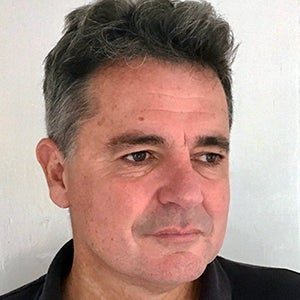
Keelan Overton (Ph.D., University of California, Los Angeles, 2011) is an independent scholar and historian of art and architecture specializing in the Perso-Islamic world from Iran to India. Her publications explore the purveying of Iran’s cultural heritage, life histories of manuscripts and buildings, and cultural relations between Iran and the Deccan. The last culminated in her edited volume Iran and the Deccan: Persianate Art, Culture, and Talent in Circulation, 1400–1700 (2020). Overton is the Director and Curator of The Emamzadeh Yahya at Varamin: An Online Exhibition of an Iranian Shrine, an independent production of her academic studio 33 Arches and hosted by Khamseen. Her publications on the Emamzadeh Yahya include “Jane Dieulafoy in Varamin: The Emamzadeh Yahya through a Nineteenth-Century Lens” (2024), “Framing, Performing, Forgetting: The Emamzadeh Yahya at Varamin” (2022) and, with Kimia Maleki, “The Emamzadeh Yahya at Varamin: A Present History of a Living Shrine, 2018–20” (2020).
See Keelan Overton’s video:
Persian Luster Tilework between the Field and Museum

Muzaffer Özgüleş (PhD, Istanbul Technical University, 2013) is currently an Assistant Professor at Alanya University. Prior to this position, he was Assistant Professor at Gaziantep University’s Faculty of Architecture (2016-21) as well as Barakat Trust Postdoctoral Research Fellow at the Khalili Research Centre at the University of Oxford (2014-15). Between 2017-19, while at Oxford he coordinated the EU project “Timeline Travel: An Alternative Tool for Architectural History Learning and Teaching.” His publications include his major monograph entitled The Women Who Built the Ottoman World: Female Patronage and the Architectural Legacy of Gülnuş Sultan published by I.B. Tauris in 2017.
See Muzaffer Özgüleş’s video:
Gülnuş Valide Sultan as an Architectural Patron (Coming Soon)

#P
Rachel Parikh is the Marguerite S. Hoffman and Thomas W. Lentz Curator of Islamic Art at the Dallas Museum of Art. She also serves as the Deputy Director for the Dunhuang Foundation. Parikh specializes in South Asian and Islamic painting as well as arms and armor. Prior to her current positions, she worked at the Worcester Art Museum, Harvard Art Museums, the Metropolitan Museum of Art, and the Art Institute of Chicago. She received her Ph.D. from the University of Cambridge. Parikh has lectured nationally and internationally, as well as published extensively. Her first book, The Khalili Falnamah, was published in 2022. You can follow her arms and armor Instagram account.
See Rachel Parikh’s videos:
Painting the Royal Hunt in India: A Prince on Horseback Hunting a Lion
Islamic Arms and Armor: Dhu’l Fiqar, ʿAli’s Miraculous Sword
Talisman
Falnama

Amanda Phillips received her DPhil at Oxford and now teaches Islamic art and material culture at the University of Virginia. She focuses mostly on craft traditions in the Ottoman Empire, and especially textiles and other things made outside the palace. Art and objects are the main topic of her first book Everyday Luxuries (2016). Her second book, Sea Change (2021), argues that textiles twined through every facet of life in the Ottoman Empire, and their study reveals not only the preoccupations and habits of elite and humble subjects alike, but also frameworks of piety, economic thought, collective taste-making, and sensory experience not found in written sources.

Stéphane Pradines is an archaeologist and Professor of Islamic Art and Architecture at the Aga Khan University Institute for the Study of Muslim Civilisations (AKU-ISMC) in London. He served as Director of the excavations of the Fatimid and Ayyubid Walls of Cairo, as well as a number of other excavations in the Indian Ocean (Maldives) and East Africa (Kenya, Tanzania, Comoros). He is a specialist of medieval trade in the Indian Ocean and the material culture of war in Muslim Africa, especially arms and military architecture. His most recent book is entitled Historic Mosques in Sub-Saharan Africa, from Timbuktu to Zanzibar (Brill, 2021).
See Stéphane Pradines’ video:
Swahili Mosques Between Sub-Saharan Africa and the Indian Ocean

Jennifer Pruitt is the Howard and Ellen Louise Schwartz associate professor of Islamic Art and Architecture at the University of Wisconsin – Madison. Her first book, Building the Caliphate: Construction, Destruction, and Sectarian Identity in Early Fatimid Architecture (Yale University Press, 2020) investigates the early architecture of the Fatimids, an Ismaili Shi‘i Muslim dynasty that dominated the Mediterranean world from the 10th to the 12th centuries. She is currently writing a second book, Inheriting an Islamic Golden Age: Globalism, National Identity, and Invented Histories in the Architecture of the Arabian Gulf, which investigates the integration of classical forms of Islamic art in the contemporary architecture of the Arabian Gulf.
See Jennifer Pruitt’s video:
Al-Aqmar Mosque
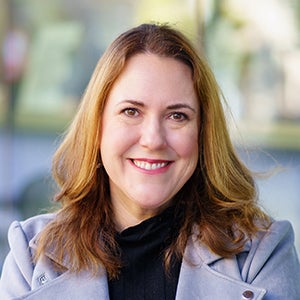
#R
Elizabeth Rauh (PhD, University of Michigan, 2020) is Assistant Professor of Modern Art History and Visual Cultures as well as Director of the Visual Arts Program at The American University in Cairo (AUC). Specializing in the history of arts and visual cultures of Iraq, Iran, and Western Asia, she examines artist engagements with Islamic heritage, popular image practices and technologies in the Islamic world, and arts of the 1960s “Shi‘i Left.” She also pursues research in ecological art practices in the history of the Persian Gulf, such as in her article “Experiments in Eden: Midcentury Artist Voyages into the Mesopotamian Marshlands” (Journal of Contemporary Iraq and the Arab World, 2021). Her research has been funded by The Academic Research Institute in Iraq, the Darat al Funun Center for Modern and Contemporary Arab Art, the Max Weber Foundation, and the Andrew W. Mellon Foundation.
See Elizabeth Rauh’s video:
A Hot Wind Blows: Ecocritical Art in the Middle East
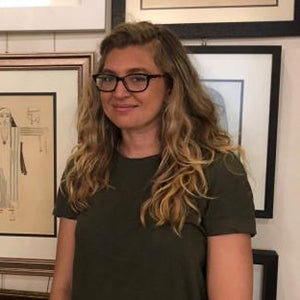
Yael Rice is Associate Professor of art history and Asian languages and civilizations at Amherst College, Massachusetts. She specializes in the art and architecture of South Asia, Central Asia, and Iran, with a particular focus on manuscripts and other portable arts of the fifteenth through eighteenth centuries. She is author of the The Brush of Insight: Artists and Agency at the Mughal Court (Seattle: University of Washington Press, 2023) and co-editor, with Dipti Khera, of Readings on Painting from 75 Years of Marg (Mumbai: Marg, 2023). Her current projects include a guest-edited issue of the International Journal of Islamic Architecture on “The Urgency of the Digital” as well as a collaborative project on a twelfth-century Qur’an manuscript from Iran that resides today in the collections of the Penn Museum in Philadelphia.
See Yael Rice’s video:
Jahangir’s Dream
Kitabkhana

Mariam Rosser-Owen has been a curator in the Middle Eastern Section at the Victoria and Albert Museum (V&A), London, since 2002. She specializes in the arts of the Arab world, in particular the Islamic Mediterranean and North Africa. She has a D.Phil. in Islamic Art and Archaeology from the University of Oxford, and is the author of Islamic Arts from Spain (V&A, 2010). She has written widely on ivory, and her book Articulating the Ḥijāba: Cultural Patronage and Political Legitimacy in al-Andalus. The ʿĀmirid Regency c.970-1010 AD was published in Brill’s Handbook of Oriental Studies series in 2021.
See Mariam Rosser-Owen’s videos:
Ivories from Islamic Spain
Lustreware

D. Fairchild Ruggles is Professor at the University of Illinois, Urbana-Champaign, with appointments in Art History, Architecture, Landscape Architecture, Medieval Studies, Spanish & Portuguese Studies, Gender and Women’s Studies, the Center for Global Studies, and the Center for South Asian and Middle East Studies. She holds the Debra Mitchell Chair in Landscape Architecture and the Presidential Chair in Social Science and the Humanities, and she directs the university’s program in Criticism and Interpretive Theory. She is the art and architecture field editor for the Encyclopedia of Islam and has authored and edited numerous award-winning books on Islamic landscape and architectural history, heritage, and the arts patronage of women in the Islamic world and South Asia. Her most recent book, Tree of Pearls (Oxford University Press 2020), won ASOR’s Nancy Lapp Popular Book Award.
See D. Fairchild Ruggles’ video:
Tree of Pearls: Shajar al-Durr and her Architectural Patronage

Ünver Rüstem is the Second Decade Society Associate Professor of Islamic Art and Architecture at Johns Hopkins University. His research centers on the Ottoman Empire in its later centuries and on questions of cross-cultural exchange and interaction. He is the author of Ottoman Baroque: The Architectural Refashioning of Eighteenth-Century Istanbul (Princeton University Press, 2019) and has published articles and chapters on topics ranging from the reception of illustrated Islamic manuscripts to the funerary art of Ottoman Cyprus. At present, he is working on a new book project that explores the role of costume in Ottoman interactions with Western Europe during the early modern and modern periods.
See Ünver Rüstem’s videos:
The Nuruosmaniye Mosque and the Ottoman Baroque
Tughra

#S
Walid Saleh is Professor of Islamic Studies at the University of Toronto. He is a specialist of the Qur’an, the history of its interpretation, and the gloss tradition in medieval Islam. He is the author of two books, including The Formation of the Classical Tafsir Tradition (Brill, 2004). He is the recipient of a Konrad Adenauer Fellowship from the Humboldt Foundation and a New Directions Mellon Foundation Fellowship, and he also has served as Al-Qasimi Visiting Professor of Islamic Studies at Exeter University. He is currently working on a history of the Qur’an commentary tradition.
See Walid Saleh’s video:
Qur’an

Marika Sardar is an independent scholar who has held curatorial positions at the Aga Khan Museum, Toronto, the Museum of Islamic Art, Doha, the San Diego Museum of Art, and the Metropolitan Museum of Art, New York. Major exhibitions include Interwoven Globe (2013), focusing on the worldwide textile trade from the 16th-18th century; Sultans of Deccan India, 1500-1750 (2015), examining the artistic traditions of the Muslim sultanates of central India; and Epic Tales from Ancient India (2016), looking at narrative traditions and the illustration of texts from South Asia.
See Marika Sardar’s videos:
A Samanid Epigraphic Dish
The Gwalior Qur’an
Frontispiece

Mira Xenia Schwerda (PhD, 2020, Harvard University) is a historian of modern and contemporary Middle Eastern art, specifically print and photography. She is a visiting assistant professor in the Department of Art History at Carleton College. Her book manuscript-in-progress, tentatively titled Between Art and Propaganda: Photographing Revolution in Modern Iran (1905–1911), focuses on the art and visual culture of Iran’s Constitutional Revolution. Translation and cross-cultural contact play a key role in her work, she has published her academic work in both English and Persian, and is the co-editor of the journal Art in Translation. Dr. Schwerda has worked at the Harvard Art Museums, where she curated the photography section of the exhibition Technologies of the Image: Art in 19th-Century Iran and is the co-founder of the Virtual Islamic Art History Seminar Series. She has taught courses in the history of photography, global modern art history, Islamic art history, and South Asian art history at the University of Edinburgh. She is a founding member and the managing director of Khamseen.
See Mira Xenia Schwerda’s video:
Minaret
Bryce Qur’an

Alex Dika Seggerman is Associate Professor of Islamic Art History in the Department of Arts, Culture and Media at Rutgers University-Newark. She is the author of Modernism on the Nile: Art in Egypt between the Islamic and the Contemporary (UNC Press, 2019) and co-editor of Making Modernity in the Islamic Mediterranean (Indiana University Press, 2022).
See Alex Dika Seggerman’s videos:
Mahmoud Mukhtar’s Khamasin: Sculpture in Modern Egypt
Orientalism

Eiren Shea (Ph.D., University of Pennsylvania, 2016) is Associate Professor of Art History at Grinnell College, where she offers classes on the arts of pre-modern Asia. She is the author of Mongol Court Dress, Identity Formation, and Global Exchange (Routledge, 2020). With Patricia Blessing and Elizabeth Dospěl Williams, she also co-authored Medieval Textiles across Eurasia, c. 300-1400 (Cambridge University Press, 2023). Her work has been supported by the Chiang Ching Kuo Foundation, Fritz Thyssen Stiftung, The Metropolitan Center for Far Eastern Art Studies, and the Center for Advanced Studies in the Visual Arts (CASVA).
See Eiren Shea’s video:
Mongol Women’s Court Dress
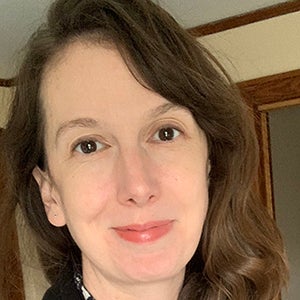
Eszter Spät is a lecturer at the Cultural Heritage Studies Program of the Central European University in Vienna. Her research focuses on the Yezidis of Iraq, concentrating on the scripturalization of Yezidi religious oral tradition and the transformation of various aspects of Yezidi religio-cultural heritage into a “bookish” religion. She is also interested in the identity formation of Yezidis within the framework of modern nationalist movements in the Middle East. She has published two books—Late Antique Motifs in Yezidi Oral Tradition (2010) and The Yezidis (2005)—and numerous articles. She also produced a documentary film on the Yezidis entitled Following the Peacock (2014).
See Eszter Spät’s video:
The Nîshans of the Yezidis of Northern Iraq

Amanda Hannoosh Steinberg is the Librarian for Islamic Art and Architecture at the Harvard Fine Arts Library, where she manages the library’s world class collection of books, photographs, and other rare items for teaching Islamic art. Her PhD work focused on women in medieval Arabic popular literature, and she previously worked as a Middle East Studies Librarian and as a Visual Resources Librarian. She holds a certificate from Harvard’s Copyright First Responders program and has been the image consultant for Muqarnas journal since 2018. She is the Images and Copyright Coordinator of Khamseen. You can find her on Twitter and Instagram.
See Amanda Hannoosh Steinberg’s video:
Harvard Fine Arts Library’s Stuart Cary Welch Islamic and South Asian Photograph Collection

#T
Yasser Tabbaa (Ph.D., Institute of Fine Arts, NYU, 1982) has written primarily on the architecture, calligraphy, and ornament of the medieval Islamic world, with occasional forays into contemporary religious architecture. In addition to his numerous articles, Tabbaa has published four books: Constructions of Power and Piety in Medieval Aleppo (Penn State Press, 1996); The Transformation of Islamic Art During the Sunni Revival (University of Washington Press, 2001); Najaf: The Gate of Wisdom (UNESCO, 2016); and The Production of Meaning in Islamic Architecture and Ornament (Edinburgh University Press, 2021). He has taught Islamic art and architecture at several US and Middle Eastern universities, including the Massachusetts Institute of Technology, the University of Michigan, Oberlin College, and NYU-Abu Dhabi.
See Yasser Tabba’s video:
Madrasat al-Firdaws in Aleppo
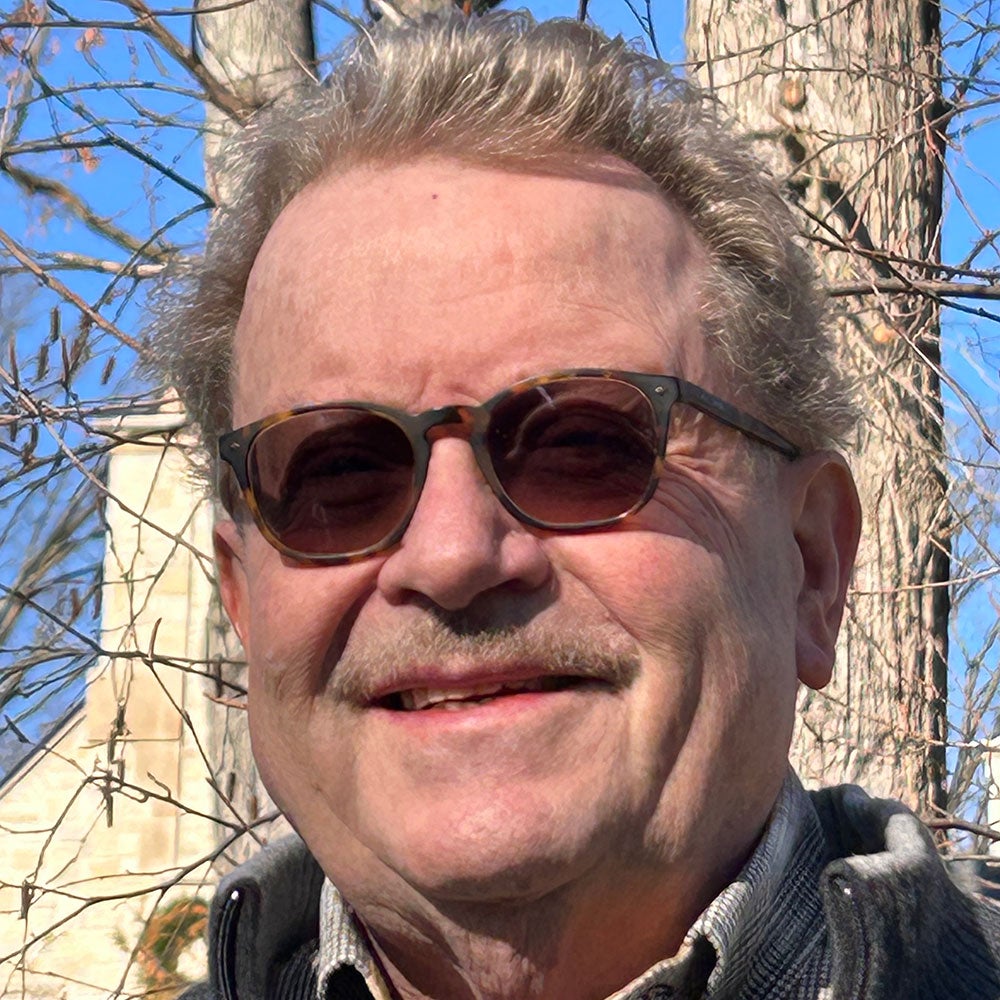
Melis Taner is an Assistant Professor at Özyeğin University, Istanbul. She specializes in sixteenth- and seventeenth-century Ottoman and Safavid manuscripts. She received her Ph.D. from Harvard University in 2016. Her book, Caught in a Whirlwind: A Cultural History of Ottoman Baghdad as Reflected in its Illustrated Manuscripts (2019), looks at the artistic production in the frontier province of Baghdad. She is currently working on illustrated manuscripts of botany and zoology, looking at interactions between Europe and the Ottoman lands, as well as at the intersection of art and nature.
See Melis Taner’s video:
Contextualizing the Hünername (Book of Talents)
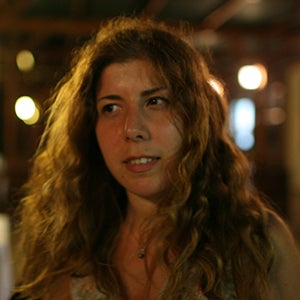
Denise-Marie Teece is an art historian specializing in the art and architecture of the Islamic world and transregional artistic exchange. Assistant Professor of Art History at New York University Abu Dhabi since 2014, she also taught coursework at New York University in New York City. Prior to joining NYUAD, she worked for seven years in the Department of Islamic Art at The Metropolitan Museum of Art. She also has held positions at the Brooklyn Museum, the Minneapolis Institute of Art, and the Musées royaux des Beaux-Arts de Belgique, Brussels, and she served as a curatorial consultant to the Aga Khan Museum in Toronto. Her current projects include a study of the Gulf and Indian Ocean World reception of Chinese porcelains, and the preparation of a website dedicated to this theme.
See Denise-Marie Teece’s video:
Monsoon Winds and Ming Porcelains: Collecting and Displaying Chinese Ceramics at the Mughal Court

Alison Terndrup (Ph.D., Boston University) is a Temporary Assistant Professor in the Art History Department at the University of Delaware. Her research spans the fields of Islamic and nineteenth-century art histories, focusing on Ottoman imperial and sub-imperial identities, cross-cultural encounters, and the uses of visual art in supporting ideologies of power. Terndrup was an Institute of Turkish Studies-Koç Holding Research Fellow and the recipient of multiple travel grants to Turkey, Serbia, and Romania. Her forthcoming article, “Mapping the ‘Miracle-Showing’ Portrait in Istanbul” will be published in Muqarnas in 2024.
See Alison Terndrup’s video:
Picture in Picture: Images of the Sultan in Balkan Princely Portraits
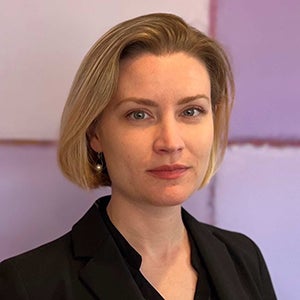
#U
Ayşe Hilal Uğurlu is Associate Professor of architectural history at MEF University, Istanbul. Her research interests include Ottoman social, political and architectural history, especially of the eighteenth and nineteenth centuries. She co-edited a book with Hatice Aynur entitled Osmanlı Mimarlık Kültürü (Ottoman Architectural Culture) and two books with Suzan Yalman, Sacred Spaces and Urban Networks and The Friday Mosque in the City: Liminality, Ritual, Politics. Her academic work has been supported by the Barakat Trust, ANAMED of Koç University, Salt Research, and Istanbul Research Institute.
See Ayşe Hilal Uğurlu’s video:
Külliye
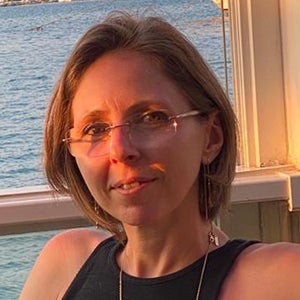
Selin Ünlüönen (Ph.D., Yale University, 2021) is a Lecturer in the Princeton University Writing Program. She is currently writing a book about how manuscript paintings shaped the court culture of sixteenth-century Iran. Other scholarly interests include Ottoman alphabet books and the representation of epigraphy in Islamic paintings, a theme explored in her article “Between the Artist and the Patron: Painted Inscriptions of the Khamsa of Shah Tahmasb,” included in Inscriptions of the Medieval Islamic World (2023).
See Selin Ünlüönen’s video:
Qalam

#V
Theodore Van Loan (Ph.D., University of Pennsylvania, 2018) is currently Visiting Professor of Islamic Art at Washington and Lee University. He specializes in the art and architecture of the Caliphal Period, with a focus on the Umayyad Dynasty and the historiographical framing of the beginning of Islamic Art. His work has appeared in the International Journal of Islamic Architecture, Beiträge zur Islamischen Kunst und Archäologie, and in the volume of essays entitled Textile in Architecture: From the Middle Ages to Modernism (2023). Currently, he is working on his first book that explores the role of historical and contemporary concepts of vision in defining the genesis of Islamic art in the 7th and 8th centuries CE.
See Theodore Van Loan’s video:
Riwaq (Coming Soon)

Valentina Vezzoli is currently research fellow at the Department of Arabic, Medieval and Modern Studies of the Institut Français du Proche Orient in Beirut. She received her PhD at the Ca’ Foscari University of Venice. Her research focuses on the study of material culture and human landscape in the Middle East during the Islamic period, with a special focus on the distribution and production of ceramic objects. She also explores cultural and economic interactions between the Islamic world and the Mediterranean.
See Valentina Vezzoli’s video:
Sphero-Conical Vessels: Evidence from Baalbek (Lebanon)

#W
Elizabeth Dospěl Williams is Penny Vinik Chair for Fashion, Textiles, and Jewelry at the MFA Boston. She was formerly Curator of the Byzantine Collection at the Dumbarton Oaks. Her exhibitions include Woven Interiors: Furnishing Early Medieval Egypt (in collaboration with the Textile Museum, 2019-20), Ornament: Fragments of Byzantine Fashion (2019-20), and Rich in Blessings: Women, Wealth and the Late Antique Household (2023-4). She received her Ph.D. from the Institute of Fine Arts, New York University, focusing on jewelry, dress practices, and attitudes towards adornment in the Byzantine and early Islamic periods.
See Elizabeth Dospěl Williams’s video:
Craft and Aesthetics in Byzantine and Early Islamic Textiles
Jewelry in Islamic Lands

Meredyth Lynn Winter (Ph.D., Harvard University, 2020) is Lecturer of Early Islamic Arts at The Courtauld Institute of Art. She is a specialist of medieval Islamic material culture and craft whose research focuses on the tenth to thirteenth centuries from Baghdad to Bukhara. Her research has been supported by the Andrew W. Mellon Foundation, the American Institute of Iranian Studies, and the Aga Khan Program for Islamic Architecture. She is currently working on a collaborative publication of the archaeological material for medieval Rayy under the Seljuks and Buyids. Her first book on the interconnected arts of medieval Iran is also in preparation.

Caroline “Olivia” Wolf is an Assistant Professor of Art History at Loyola University Chicago, where her teaching and research focuses on art and architecture from a global perspective, with emphasis on Latin America, the Middle East, and diasporic intersections. Her work has been supported by a Fulbright-Hays DDRA fellowship and the Society of Architectural Historians, among others. Wolf was a Visiting Scholar at the Calouste Gulbenkian Museum (2019), a Camfield Fellow at the Museum of Fine Arts, Houston (2013-2014), and received her PhD at Rice University.
See Caroline “Olivia“ Wolf’s video:
Monumental Mosques in Latin America: Key Modern and Contemporary Case Studies
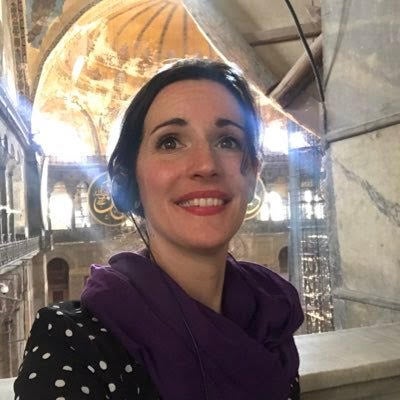
Sylvia Wu is Assistant Professor in the Department of Art and Art History at the University of Texas at Austin. A historian of medieval and early modern Islamic art, she specializes in the architecture and material culture of the Indian Ocean world, with a focus on Muslim communities in coastal China and their multifaceted engagement with the region’s other Muslim societies. Her primary research interests include mosque and shrine architecture, pilgrimage and the idea of sacred geography, and the intersections of narrative building with material and spatial presentation. She is currently developing her first book project, which examines the capacious idea of mosque construction—as imitation, recreation, and a form of history (re)writing—in Quanzhou’s medieval Chinese port city.
See Sylvia Wu’s (Graduate Student Presentation Award 2022 Recipient) video:
The Ashab Mosque in Quanzhou: A Coastal Mosque in South China
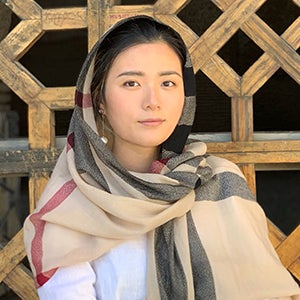
#Y
Ayşin Yoltar-Yıldırım, Norma Jean Calderwood Curator of Islamic and Later Indian Art at the Harvard Art Museums, received her MA and PhD in art history from the Institute of Fine Arts, New York University. Her interests include arts of the book from the Persian and Ottoman realms as well as the history of Islamic art collections. She has recently completed the reinstallation of the Arts of the Islamic World gallery at the Brooklyn Museum (2022). Previously she curated “A New Light on Bernard Berenson: Persian Paintings from Villa I Tatti” (2017, Harvard Art Museums) and “Syria, Then and Now: Stories from Refugees a Century Apart” (2018, Brooklyn Museum).
See Ayşin Yoltar-Yıldırım’s video:
The Birth Scene of Iskandar (Alexander the Great)

#Z
Roxana Zenhari is a lecturer and research fellow at the Georg-August University, Göttingen. She is a historian of Islamic art whose work explores the relationship of texts and images with dominant cultural and political discourses in the premodern Persianate world. She wrote her PhD thesis on a fourteenth-century manuscript of Samak-e ʿayyār, now published under the title The Persian Medieval Romance Samak-e ʿayyār: Analysis of an Illustrated Inju Manuscript. Her most recent publication, Mirzā ʿAli-Qoli Khoʾi: The Master Illustrator of Persian Lithographed Books in the Qajar Period, written with Ulrich Marzolph, provides a study of illustrated lithographed books containing popular and religious stories printed in Iran during the first half of the nineteenth century.
See Roxana Zenhari’s video:
Shahnameh

This work is licensed under a Creative Commons Attribution-NonCommercial-NoDerivatives 4.0 International License.


